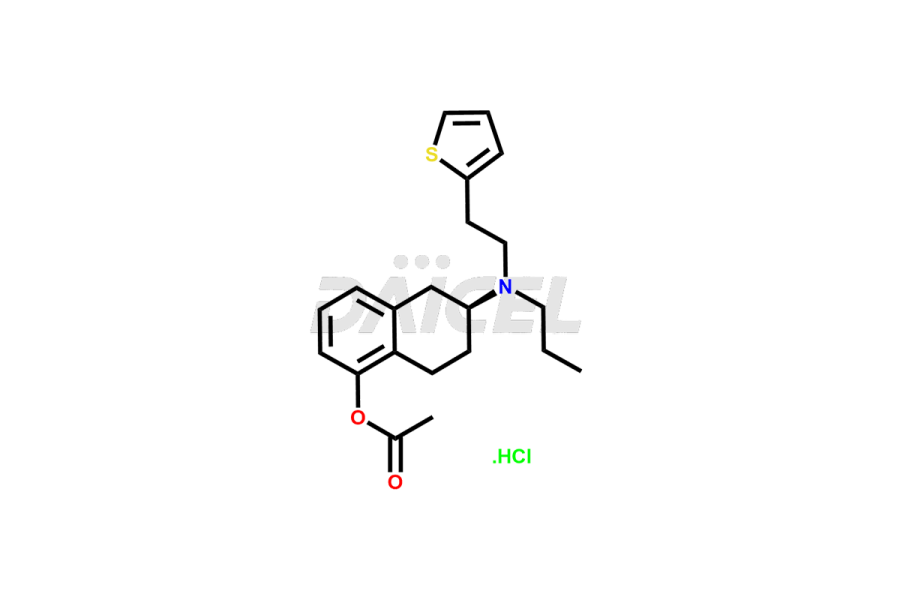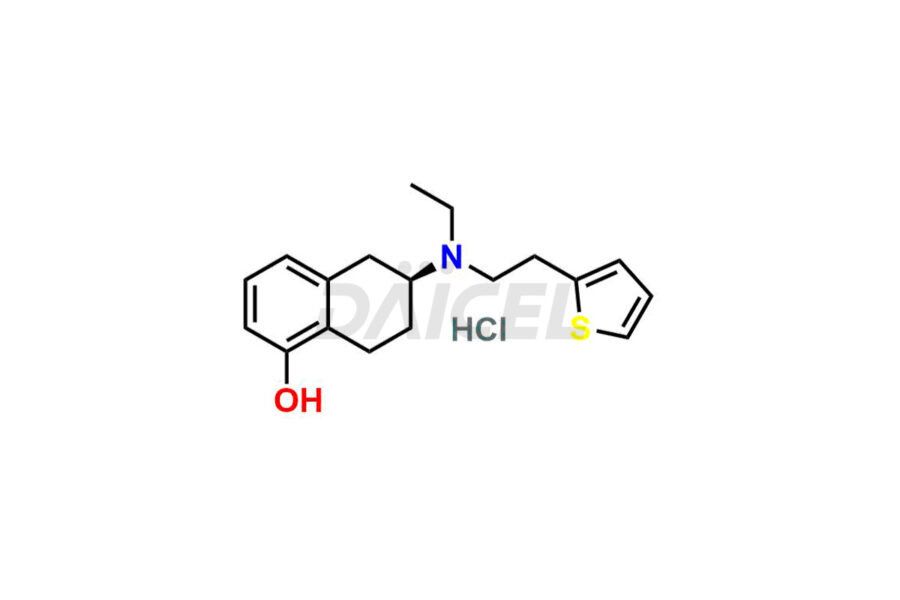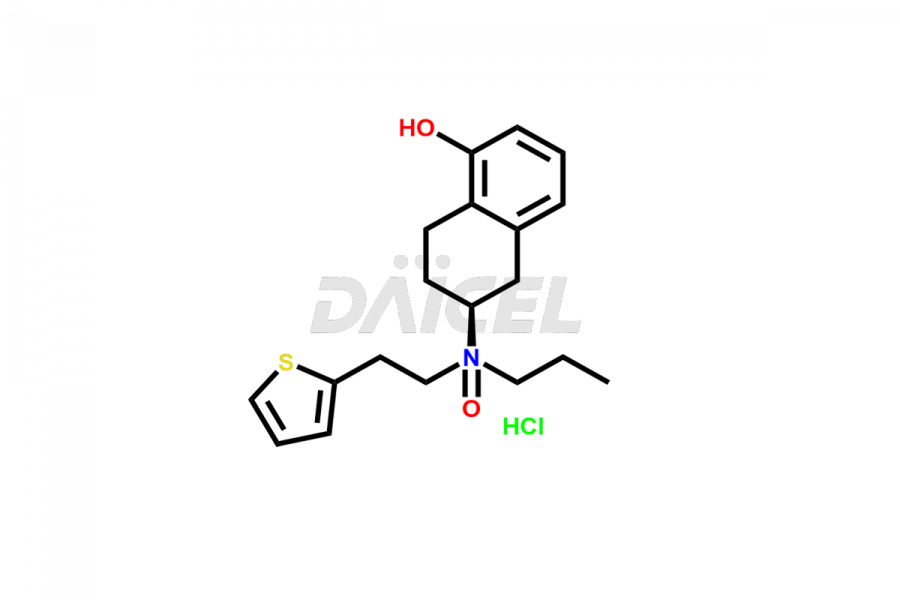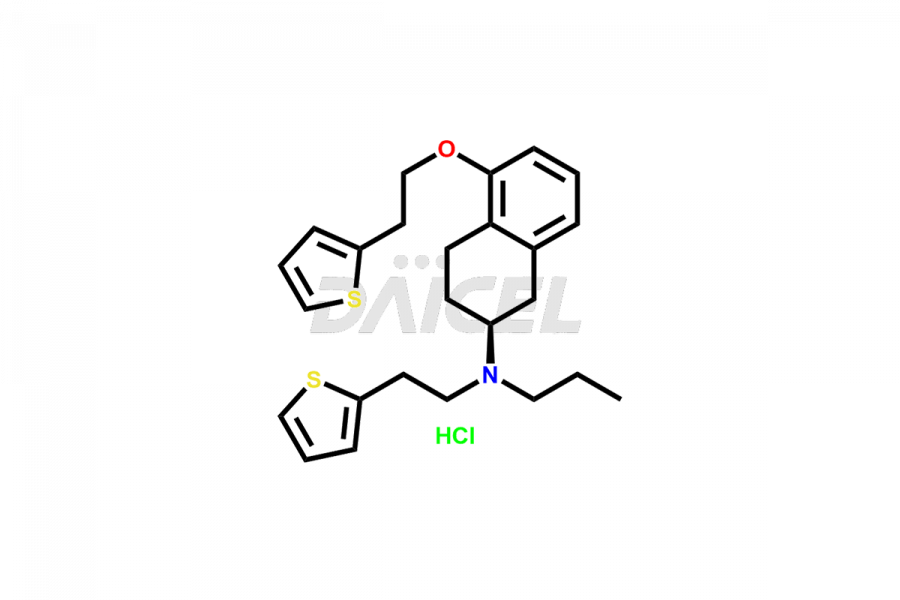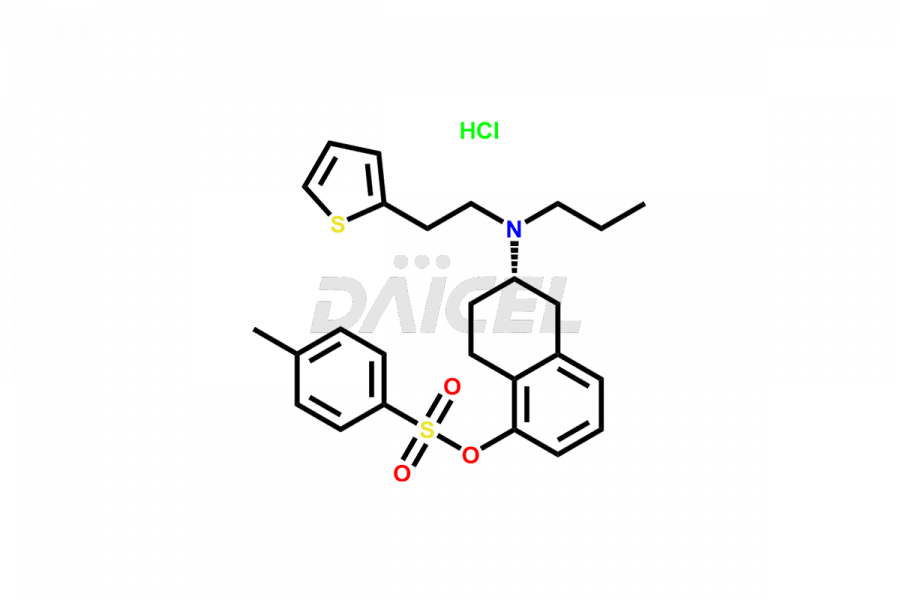Rotigotine
General Information
General Information
Rotigotine Impurities and Rotigotine
Daicel Pharma offers optimal Rotigotine impurities, including Ethyl Rotigotine, Rotigotine N-Oxide Hydrochloride, and Rotigotine racemic mixture. These impurities are significant in assessing the quality, stability, and biological safety of the active pharmaceutical ingredient Rotigotine. Moreover, Daicel Pharma offers custom synthesis of Rotigotine impurities and delivers them globally to meet the specific requirements of the clientele.
Rotigotine [CAS: 99755-59-6] is a non-ergot dopamine agonist treating Parkinson’s disease and restless leg syndrome. In patients diagnosed with Parkinson’s, Rotigotine demonstrates enhanced motor function and improved scores in daily activities.
Rotigotine: Use and Commercial Availability
Rotigotine treats neurologic disorders like Parkinson’s disease and moderate-to-severe primary Restless Legs Syndrome. Like other dopamine receptor agonists, Rotigotine exhibits antidepressant properties and may offer potential benefits in managing depression. This medicine is available under Neupro, which effectively contains the active ingredient – Rotigotine.
Rotigotine Structure and Mechanism of Action
The chemical name of Rotigotine is (6S)-5,6,7,8-Tetrahydro-6-[propyl[2-(2-thienyl)ethyl]amino]-1-naphthalenol. Its chemical formula is C19H25NOS, and its molecular weight is approximately 315.5 g/mol.
Though the mechanism of action of Rotigotine is unknown, its activity is related to dopamine D2-receptors stimulation within the brain.
Rotigotine Impurities and Synthesis
Rotigotine impurities can originate from manufacturing materials, synthetic1 intermediates, or degradation products. It is crucial to closely monitor and regulate the formation of these impurities due to their potential toxicity or impact on the drug’s effectiveness.
Daicel offers a Certificate of Analysis (CoA) from a cGMP-compliant analytical facility for Rotigotine impurity standards. The CoA includes complete characterization data, such as 1H NMR, 13C NMR, IR, MASS, and HPLC purity2. Additional characterization data, including 13C-DEPT, will also be provided upon request. Daicel Pharma can generate unknown impurities or degradation products of Rotigotine.
References
FAQ's
References
- Banfi, Aldo; Belogi, Gianluca; Fuganti, Claudio; Pizzocaro, Roberta, A Process for The Preparation Of Rotigotine, Fidia Farmaceutici S.p.A., Italy, WO2010035111A1, April 1, 2010
- Chu, Bao-Lin; Guo, Baoyuan; Zuo, Hongjian; Wang, Zhihua; Lin, Jin-Ming, Simultaneous enantioseparation of antiparkinsonian medication rotigotine and related chiral impurities by capillary zone electrophoresis using dual cyclodextrin system, Journal of Pharmaceutical and Biomedical Analysis, Volume: 46, Issue: 5, Pages: 854-859, 2008
Frequently Asked Questions
How are Rotigotine impurities detected and quantified?
Analytical methods, such as high-performance liquid chromatography (HPLC), are commonly used to detect and quantify impurities in Rotigotine batches. HPLC coupled with a UV detector offers excellent sensitivity and selectivity, allowing for their separation and identification in the drug.
How are specifications determined for Rotigotine impurities?
Impurity specifications for Rotigotine are through rigorous research, analysis, and regulatory considerations. Factors such as toxicological studies, clinical data, and regulatory guidelines help define acceptable limits for impurity levels. These specifications ensure that the drug remains safe and effective for patients.
What are the chromatographic methods for chiral separation of Rotigotine Impurities?
Direct chromatographic methods involve the chiral stationary phases that directly interact with the Rotigotine impurities, separating them based on their unique properties. Indirect chromatographic methods, on the other hand, rely on adding a chiral auxiliary or derivatization step to the Rotigotine molecule to introduce chiral selectivity for separation.
What are the temperature conditions required to store Rotigotine impurities?
Rotigotine impurities are stored at a controlled room temperature between 2-8 °C or as indicated on the Certificate of Analysis (CoA).
Note: Products protected by valid patents by a manufacturer are not offered for sale in countries having patent protection. The sale of such products constitutes a patent infringement, and its liability is at the buyer's risk.

